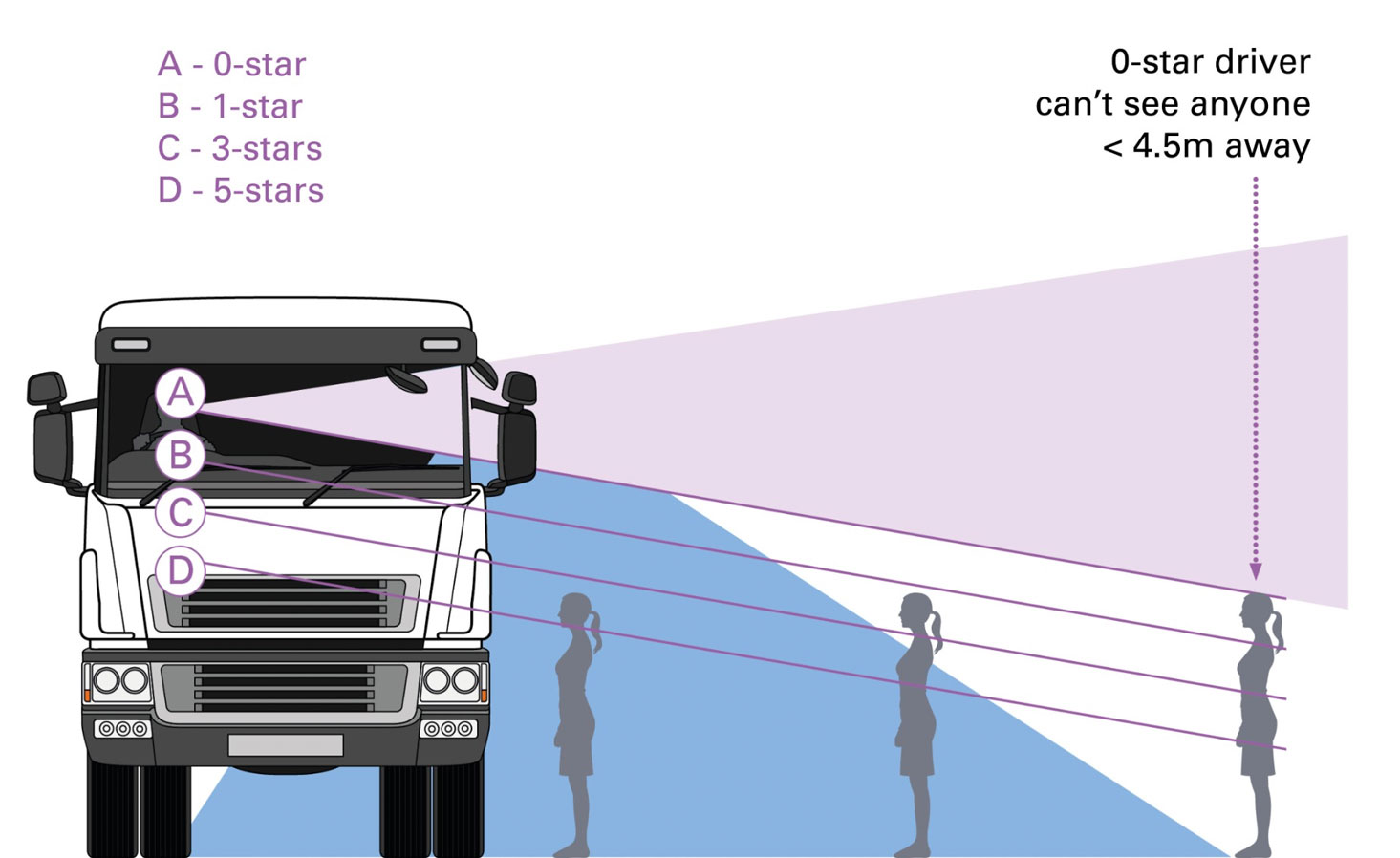Exploring the Progressive Safe System and possible enhancements?
The implementation of advanced safety systems in commercial vehicles has become an essential step towards improving road safety. One such notable initiative is the Direct Vision Standard (DVS) Progressive Safe System.
The new PSS will come into force in October 2024, and will apply to all vehicles that have a two-star rating or lower (around 165,000 vehicles, which is 90% of the existing fleet operating in London).
The proposed enhancements within the new standard will mainly involve mandating elements of the Safe System that are currently only recommendations, alongside enforcing improved detection at the front of vehicles and providing clearer performance specifications.
Designed to enhance visibility and reduce blind spots in large goods vehicles (LGVs) and heavy goods vehicles (HGVs), this system aims to improve indirect vision and protect vulnerable road users.

Below we delve into the possible enhancements for the new DVS Progressive Safe System (PSS) based around technology that can be retrofitted onto to HGVs, industry recognised and readily available on the market at the time.
Camera & Monitor Systems (CMS):
A critical component of the DVS Progressive Safe System is the integration of advanced camera monitor systems (CMS). These systems, strategically placed around the vehicle, enhance visibility and eliminate blind spots. The cameras capture real-time footage, providing drivers with a comprehensive view of their surroundings and incorporate features like night vision, wide-angle lenses, and high-resolution imaging for optimal performance.
Monitor displays are then installed within the cab and enable real-time views of camera feeds, providing high quality visuals even in bright sunlight. Some systems offer split-screen functionality, enabling drivers to simultaneously view multiple camera angles.
Object Detection / Moving Off-System (MOIS)
To further enhance safety at the front of larger vehicles, Moving Off Information Systems (MOIS) have also been proposed. These systems can detect the presence of pedestrians, cyclists, or other objects within the vehicle’s vicinity. When an object is detected, the system alerts the driver through visual or audible warnings, enabling them to take appropriate action promptly. Object detection systems play a crucial role in mitigating collision risks, particularly in crowded urban environments.
Ultra-Sonic/Radar Sensors
Yet another element proposed across applicable vehicles to ensure full coverage down the nearside that will detecti vulnerable road users (without activation in relation to roadside furniture or stationery vehicles).
Warning Alarms
Audible warning alarms are an essential aspect of the proposed DVS Progressive Safe System in order to warn road users of intended manoeuvres. The alarms will emit a distinct sound, ensuring pedestrians and cyclists are aware of the vehicle’s presence and can react accordingly. These alarms are especially valuable in situations where a driver’s direct line of sight may be limited. We offer a range of alarm solutions including multi-input and multi-function ‘white noise’ options that provide a more targeted audible warning.
Sideguards and Under-run Protection:
To address the specific risks associated with vulnerable road users, such as cyclists and pedestrians, the DVS Progressive Safe System necessitates the installation of sideguards and under-run protection. Sideguards are panels installed along the sides of LGVs and HGVs to prevent cyclists and pedestrians from being dragged beneath the vehicle in the event of a collision.
Under-run protection consists of sturdy barriers positioned beneath the vehicle to prevent smaller vehicles or pedestrians from sliding beneath the chassis.
Publication of the final PSS requirements will be published in summer 2023 after a review process of the feedback has taken place; and the PSS will be enforced from October 2024 when phase two of the DVS will be implemented. As momentum grows we can anticipate a reduction in accidents involving LGVs and HGVs, making our roads safer for all users.

As implementation continues and awareness grows, we can anticipate a reduction in accidents involving LGVs and HGVs, making our roads safer for all users.
For more information and to speak to one of our team about how we can help your fleet achieve with any new requirements contact us today. With healthy stock levels, quick delivery and nationwide fitting capabilities, choose EchoMaster for all your vehicle fleet safety requirements.

